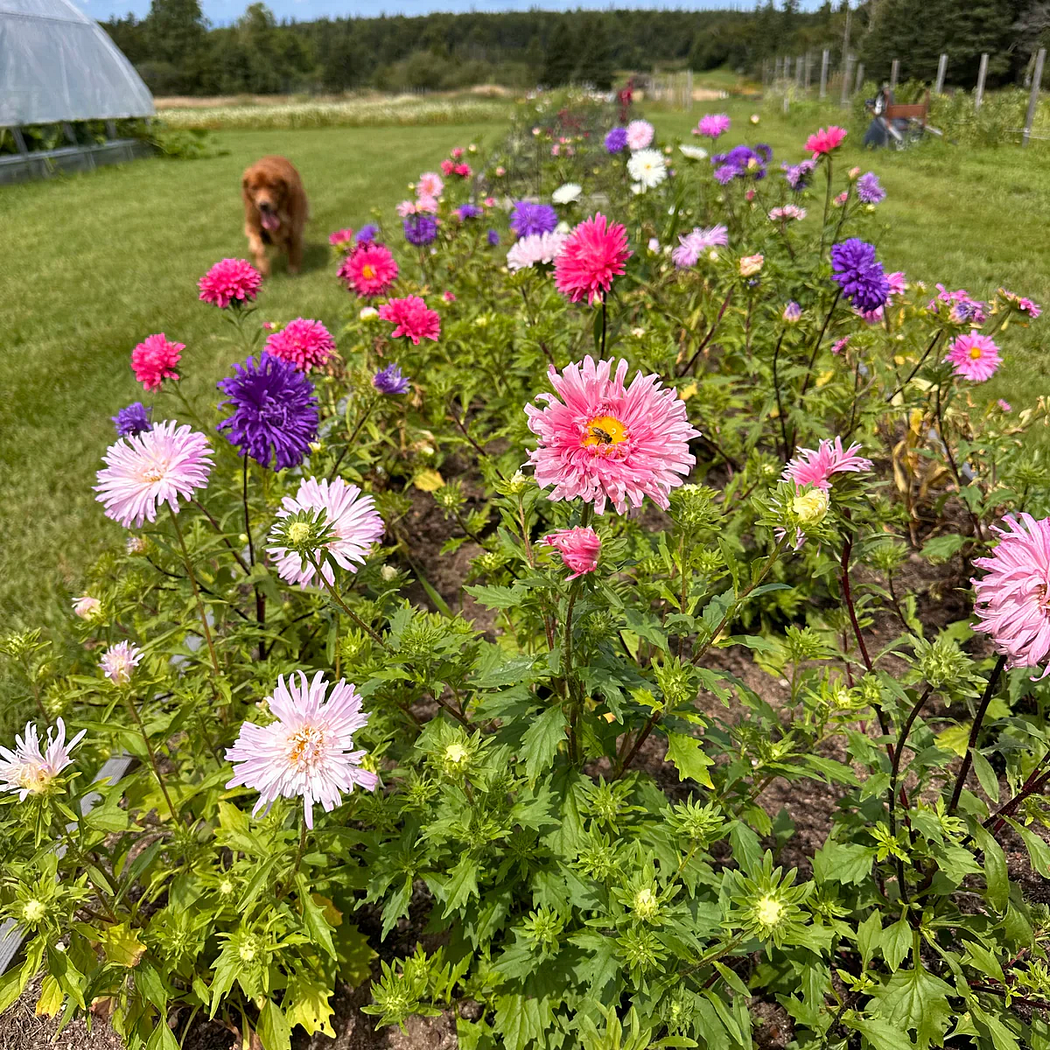Mixed Aster Crego Flowers: Vibrant Blooms for a Stunning Garden
Aster Crego flowers (Callistephus chinensis) are renowned for their vibrant colors, feathery petals, and long-lasting blooms. These annual flowers add texture, elegance, and a pop of color to gardens, borders, and flower beds. With a mix of shades including pink, purple, red, white, and blue, Mixed Aster Crego flowers are perfect for enhancing any outdoor space.
In this guide, we will cover everything you need to know about growing and caring for Mixed Aster Crego flowers.
Why Grow Mixed Aster Crego Flowers?
1. Stunning, Unique Blooms
- These flowers have large, chrysanthemum-like petals that give them a distinct and fluffy appearance.
- Their radiant mix of colors adds a dynamic visual appeal to any garden.
2. Long-Lasting and Seasonal Beauty
- Blooms appear from late summer to fall, providing seasonal color when other flowers start to fade.
- Ideal for flower beds, borders, and cut flower arrangements.
3. Low-Maintenance and Easy to Grow
- Asters are hardy and adaptable to different growing conditions.
- With basic care, they flourish and provide continuous blooms throughout the season.
4. Attracts Pollinators
- Aster Crego flowers attract butterflies, bees, and other beneficial insects, making them a great addition to pollinator-friendly gardens.
5. Excellent Cut Flowers
- Their sturdy stems and long-lasting blooms make them perfect for floral arrangements and bouquets.
When to Plant Mixed Aster Crego Seeds?
Best Time to Sow Seeds
- Spring (after the last frost) or early summer is ideal for sowing Aster Crego seeds.
- In warmer regions, seeds can also be started in late summer for fall blooms.
Germination Period
- Seeds take about 7–14 days to germinate in warm, moist soil.
Blooming Period
- Flowers bloom from mid-summer through fall, lasting until the first frost.
Where to Plant Mixed Aster Crego Flowers?
Light Requirements
- These flowers thrive in full sun but can tolerate partial shade.
- At least 6–8 hours of sunlight daily ensures optimal flowering.
Soil Preferences
- Prefers well-draining, fertile soil rich in organic matter.
- A pH range of 6.0–7.5 is ideal for healthy growth.
Ideal Locations
- Garden beds, borders, containers, and wildflower gardens.
- Perfect for cut flower gardens and pollinator-friendly landscapes.

How to Plant Mixed Aster Crego Seeds
Step 1: Preparing the Soil
- Loosen the soil and remove weeds and debris.
- Mix in compost or well-rotted manure to enhance fertility.
Step 2: Sowing the Seeds
- Scatter seeds lightly on the soil surface.
- Press them gently into the soil but do not bury them deeply, as they need light to germinate.
- Keep the soil moist but not soggy.
Step 3: Transplanting (If Started Indoors)
- If grown in seed trays, transplant seedlings once they reach 3–4 inches in height.
- Space plants 12–18 inches apart to allow proper air circulation.
How to Care for Mixed Aster Crego Flowers
1. Watering
- Water deeply and consistently, keeping the soil moist but not waterlogged.
- Avoid overhead watering to prevent fungal diseases.
2. Fertilization
- Apply a balanced fertilizer (10–10–10) every 3–4 weeks for healthy growth.
- Avoid excessive nitrogen, as it can lead to more foliage and fewer blooms.
3. Pruning and Deadheading
- Deadhead spent blooms to encourage continuous flowering.
- Trim any damaged or diseased foliage to maintain plant health.
4. Staking (If Needed)
- Taller varieties may require staking to prevent bending or breaking.
5. Pest and Disease Control
- Watch out for aphids, spider mites, and powdery mildew.
- Use organic insecticides or neem oil to prevent infestations.
Companion Plants for Mixed Aster Crego Flowers
Best Companion Plants
- Marigolds — Help repel pests naturally.
- Zinnias — Complement asters with similar blooming times.
- Cosmos — Adds height variation and contrast in flower beds.
- Echinacea (Coneflowers) — Attracts pollinators and pairs beautifully with asters.
- Salvia — Provides contrasting textures and colors.
Plants to Avoid
- Heavy-feeding plants like cabbage or tomatoes, as they compete for nutrients.
Uses of Mixed Aster Crego Flowers
1. Garden Landscaping
- Ideal for flower beds, pathways, and cottage gardens.
- Works well in container gardening for balconies and patios.
2. Floral Arrangements
- Their long vase life makes them excellent cut flowers for bouquets and decorations.
3. Pollinator Gardens
- Provides an essential nectar source for bees, butterflies, and other beneficial insects.
4. Seasonal Displays
- Mixed asters create a colorful autumn display when other summer flowers start to fade.
Common Problems and Solutions
1. Wilting Leaves and Stems
- Cause: Underwatering or excessive heat.
- Solution: Water deeply and mulch around the base to retain moisture.
2. Yellowing Leaves
- Cause: Poor drainage or nutrient deficiency.
- Solution: Improve soil drainage and apply a balanced fertilizer.
3. No Blooms
- Cause: Too much nitrogen or not enough sunlight.
- Solution: Reduce nitrogen intake and ensure full sun exposure.
Final Thoughts
Mixed Aster Crego flowers are an exceptional choice for home gardeners, offering dazzling, feathery blooms in a variety of shades. With their easy-growing nature, long blooming season, and pollinator-friendly appeal, these flowers add charm and vibrancy to any garden.
For high-quality Aster Crego flower seeds, visit Seedfella.com and start growing these stunning blooms today!




Comments
Post a Comment